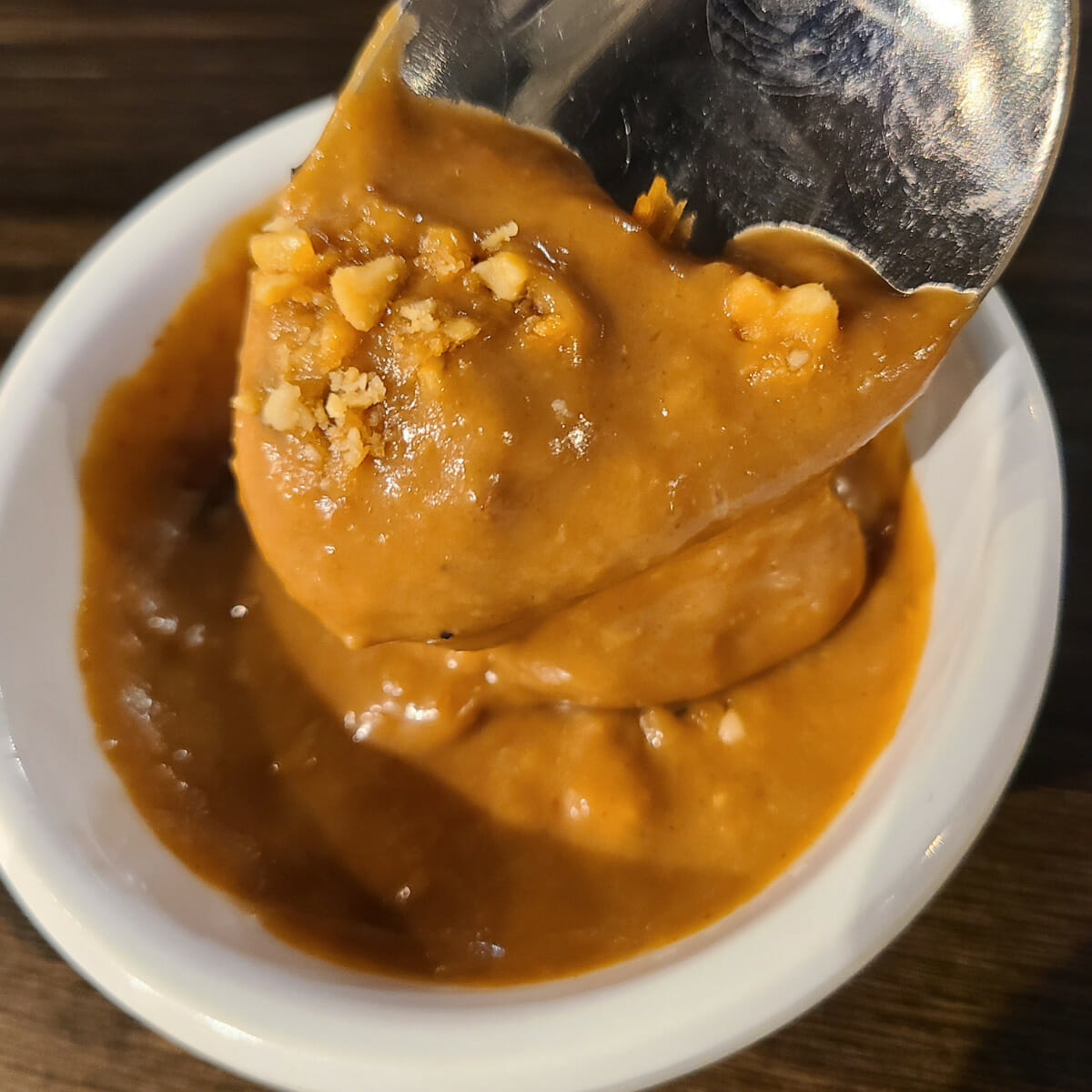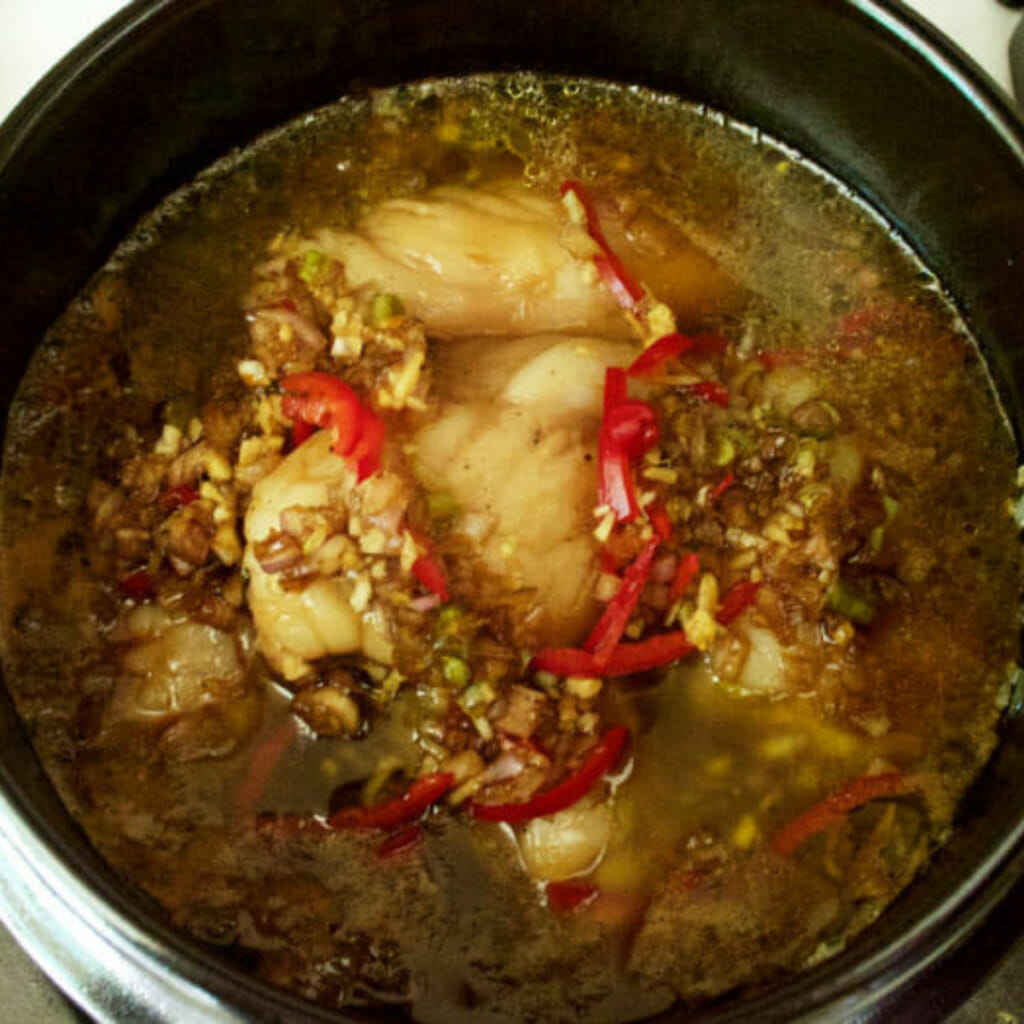A Vietnamese peanut dipping sauce is an essential piece of the Vietnamese spring roll puzzle. This sauce pairs well with the beef, lettuce and vermicelli plus it provides a bit of a sweet kick at the end. Vietnamese cuisine can be a mix of sweet and savory, which makes this peanut hoisin dipping sauce a perfect sauce.
This recipe is for the dipping sauce only – if you’re looking to make Vietnamese spring rolls (Goi Cuon), check out our other recipe!
How to use Peanut Hoisin Dipping Sauce?
At Vietnamese restaurants, this peanut sauce is traditionally served with the fresh Vietnamese spring rolls. It is typically topped with roasted crushed peanuts and a drizzle of sriracha (on Amazon).
At Thai restaurants, this sauce – or a slight variation of it – is typically served with chicken satay (chicken on a skewer topped with peanuts).
Hint: do not confuse Vietnamese fresh spring rolls with fried spring rolls (aka egg rolls). Those are served with fish sauce (on Amazon)! At Vietnamese restaurants you would typically find both on the menu under appetizers.
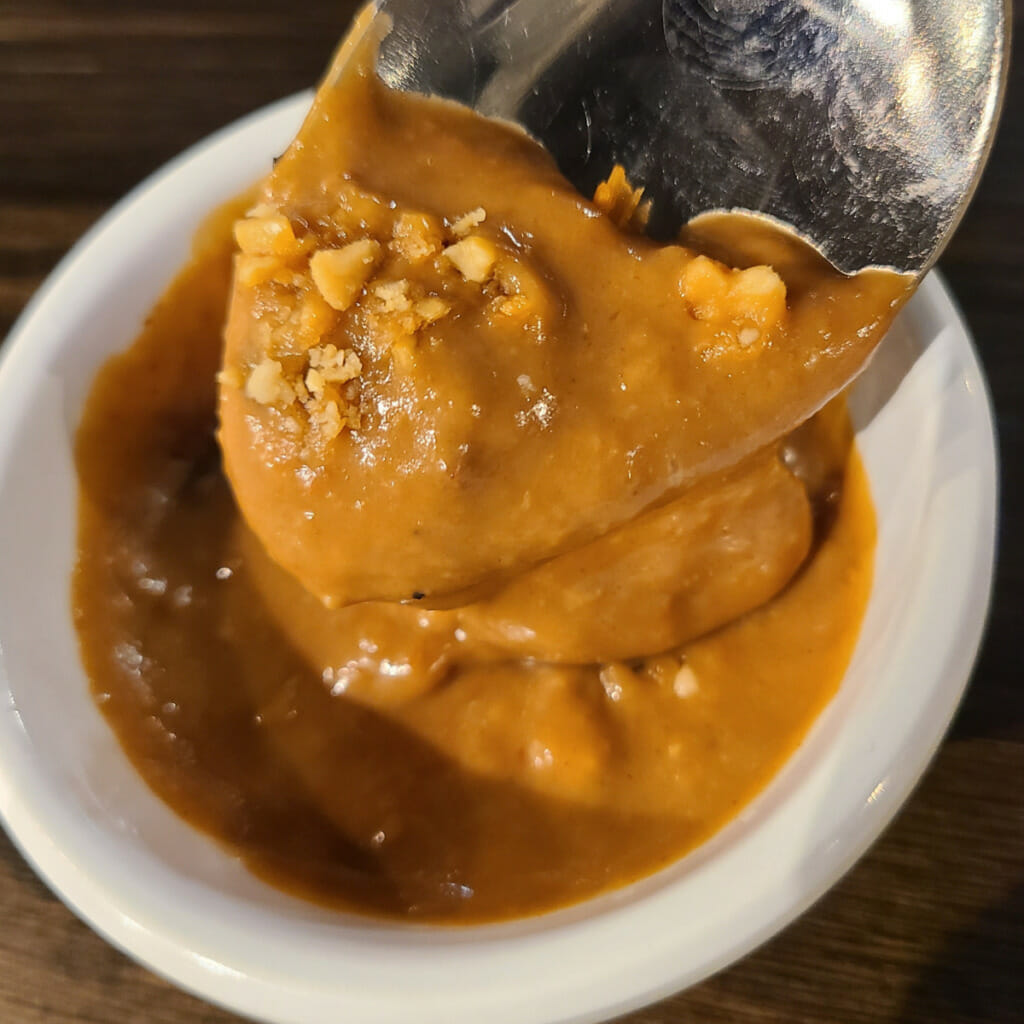
Ingredients in Vietnamese peanut sauce
- creamy peanut butter (on Amazon)
- sugar
- whole milk (or half and half for a richer, creamier taste)
- hoisin sauce (on Amazon)
- optional topping – roughly chopped roasted peanuts
- optional sriracha (on Amazon) drizzle on top, for some heat in your spring rolls
How this recipe is different than the rest
Just because it only has 4 main ingredients doesn’t mean that I’ve “simplified” the recipe. It’s the complete opposite – this is an authentic Vietnamese recipe.
I got this secret sauce recipe from a Vietnamese restaurant owner at a Pho restaurant (I.E., my mom, sister, and brother – each of whom owns their own Pho restaurant).
When I looked online, I saw many variations of “peanut dipping sauce for spring rolls” – some has soy sauce, some has chicken stock, some garlic, some has lemon juice, and even sesame oil.
The truth is I’ve never made this with any of those ingredients – the one ingredient you may not have seen anywhere, which is unique to this recipe, is the whole milk (you can also use half and half).
It will not fail you, trust me! It’s a rich, creamy taste that you will fall in love with. And with such simple ingredients! The secret is in the ratios used.
By the way, if you love Vietnamese noodle soup, be sure to check out our other Vietnamese noodle soup recipe – Brisket Pho Noodle Soup Recipe. Just love Vietnamese food in general? Then you’ll love our Vietnamese Fresh Spring Rolls Recipe with Dipping Sauce as well!
Step by step instructions
To make peanut dipping sauce, whisk together peanut butter, whole milk, sugar, and hoisin sauce (on Amazon) in a small sauce pan. Stir with a whisk until mixed in. Turn on stove to medium heat and continue to whisk vigorously. As soon as it boils immediately turn off and remove from heat.
The consistency of the sauce is runny while it’s still hot – it will thicken as it cools down.
To serve, garnish with roughly chopped or finely crushed roasted peanuts. I’ve seen it both ways – but definitely prefer a finer sprinkle rather than large chopped pieces. Try both and see which you like!
Optionally add a drizzle of sriracha (on Amazon).
At restaurants you might see it garnished with some mint and pickled daikon and carrots for a nice presentation, like this:
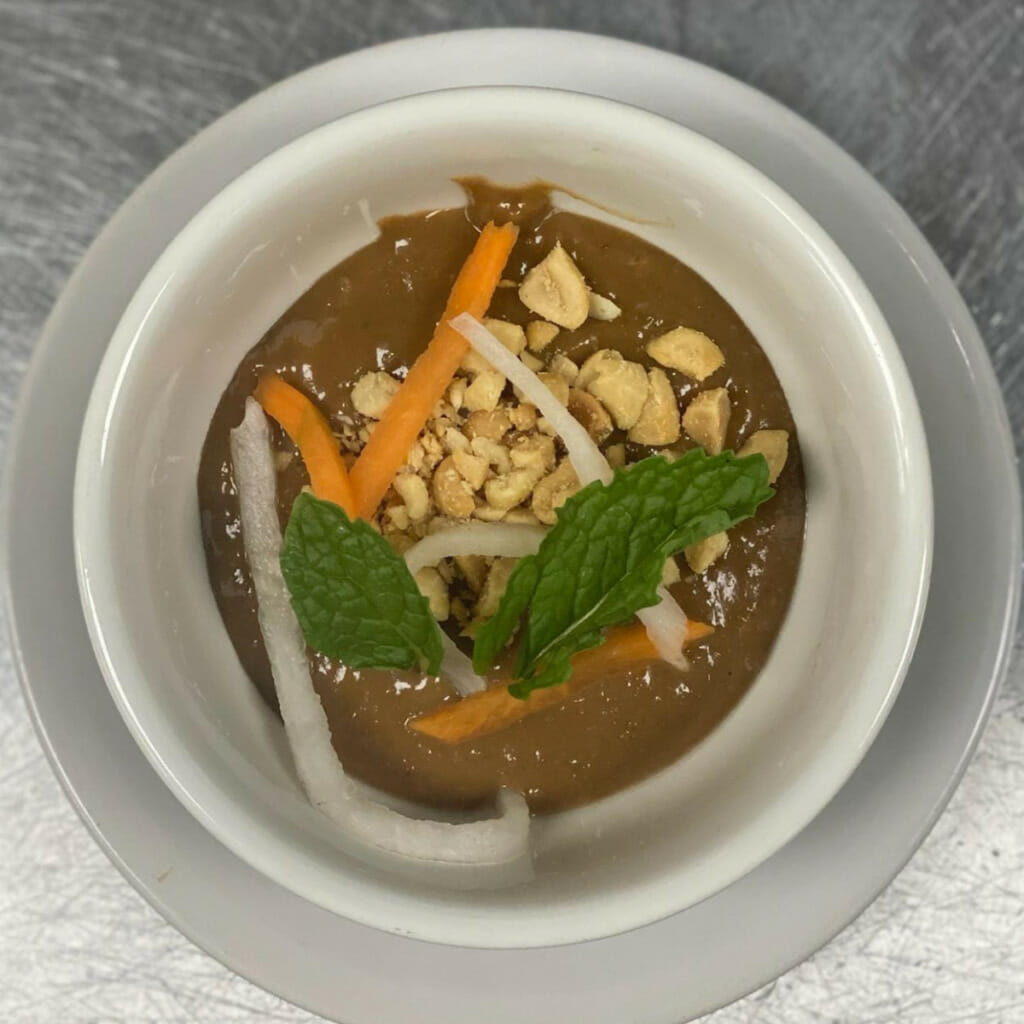
What tips can be used to change up the flavor for variety?
Use soft creamy peanut butter
It makes this recipe a lot easier to make when you have readily creamy peanut butter (on Amazon) – the “healthy” types of creamy peanut butter (on Amazon), in my opinion, tend to not be as creamy and very hard to stir and mix. A good ole jar of Skippy’s creamy peanut butter is best, in my opinion.
Add a teaspoon of sesame oil to the sauce for a nuttier flavor
I’ve never done this, but have seen on forums and in the food blogging world, that sesame oil adds a unique flavor and aroma to the dish, as well as enhancing its overall taste. It also helps to thicken up the sauce, making it perfect for use in cold spring rolls.
Add a drizzle of Sriracha to give the sauce a bit of heat
Sriracha helps to add a subtle spicy depth and richness to this sauce. You can give it a small drizzle, or alot of drizzle depending on how spicy you want your sauce! Typically at restaurants, you would see a little drizzle off to a side – so you can easily scoop it out with a spoon if you don’t want the heat. If it doesn’t come with it, at Vietnamese restaurants a bottle of Hoisin sauce (on Amazon) and Sriracha is always readily available!
Add a teaspoon of Worcestershire sauce to add depth of flavor
Adding Worcestershire sauce to this sauce can improve its flavor by providing an additional familiar and savory taste. Worcestershire also adds complexity and depth to the overall flavor of this dipping sauce.
Add a teaspoon of soy sauce to give the sauce a salty taste
You will find that a lot of other peanut dipping sauce has soy sauce as an ingredient – I find that it makes the sauce a wee bit too “salty” and takes away from the peanutty sweetness flavor. But if you’re looking to add some saltiness to the sauce because it’s too sweet, a little bit of soy sauce will help balance the flavor a bit.
Try adding a few drops of fish sauce to give the sauce a umami flavor
Umami is a salty savory taste that is common in Vietnamese and Thai cuisine. However, it is very strong and pungent, so unless you know what it is, I would not try this.
You should also know, that the fish sauce (on Amazon) that comes in a bottle at grocery stores or on Amazon, is not the same as version that restaurants serve! Fish sauce (on Amazon) served at restaurants are diluted with some water and sugar.
If you’re eager to try it, add a few drops of it to our recipe down below, or try this other recipe I found from my friend over at All Ways Delicious. In this particular recipe, I believe the maple syrup was used to balance the umami from the fish sauce.
Add a teaspoon of freshly grated garlic to add complexity
There’s not a lot of dishes that can’t be enhanced by garlic. I’m the type of cook that uses a whole garlic head when a recipe calls for “4 cloves of garlic”, and I always laugh when a recipe asks for 2 cloves.
For this sauce, though, if you’re going to do this, grate it finely and don’t overdo it!
FAQs
How do you store this sauce?
The best way to store the peanut sauce recipe for cold spring rolls is in an airtight container in the refrigerator for three days. Remember this recipe contains milk!
What is Vietnamese Spring Rolls
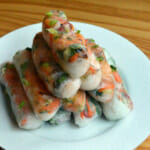
u003ca href=u0022https://arousingappetites.com/vietnamese-spring-rolls/u0022 data-type=u0022postu0022 data-id=u0022539u0022u003eVietnamese Spring Rollsu003c/au003e are the most popular appetizer at most Vietnamese restaurants. They are made with thinly sliced vegetables rolled in a rice paper wrapper with some vermicelli noodles and either shrimp, grilled beef, or both. It is typically served with peanut sauce.u003cbru003eu003cbru003eDon’t confuse this with u003cstrongu003eu003cemu003efriedu003c/emu003eu003c/strongu003e spring rolls, which resembles small versions of egg rolls you might be familiar with at Chinese fast food restaurants! Usually you would see both version on the menu at Vietnamese restaurants.
What else can I eat this sauce with?
Anything, ha! u003cbru003eu003cbru003eAt restaurants this peanut sauce a will make a fantastic substitute for fish sauce in vermicelli rice bowls. If you don’t like fish sauce and you order a vermicelli rice bowl, without this sauce, your entree will be very dry. u003cbru003eu003cbru003eI actually have a lot of non-Asians who love this sauce so much this is what they prefer for vermicelli bowls, instead of the umami fish sauce.u003cbru003eu003cbru003ePersonally, I also like to use this peanut sauce on my rice plates as well, instead of the fish sauce that normally accompanies it.
Calories in Vietnamese peanut dipping sauce for spring rolls
1 tablespoon of peanut hoisin dipping sauce contains 30 calories – but it depends on many rolls you’re eating and how heavy of a dipper you are! I’d say a more realistic number is 3 tablespoons for 2 rolls, so around 90 calories.u003cbru003eu003cbru003eObviously this depends on how many rolls you eat and how deep you like to dip your roll…but let’s pretend you eat two of them (that’s how any comes in one order at most restaurants). and you dip it normal – not actively trying to be greedy or actively trying to be stingy. I’d care to venture you’ll require 3 tablespoons.
Love Asian Food? Try one of these other recipes:
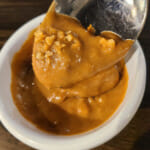
Peanut Hoisin Dipping Sauce
- Total Time: 12
- Yield: 7 servings of 3 tablespoons 1x
Description
An authentic Vietnamese restaurant quality peanut dipping sauce – it’s my mother’s secret (and she owns 3 Vietnamese restaurants).
Ingredients
- 1/4 cup creamy peanut butter
- 1 cup whole milk
- 2/3 tablespoon granulated sugar
- 2 and 1/2 tablespoons hoisin sauce
Optional Garnishings:
- sriracha drizzle
- roughly chopped or grounded roasted peanuts
- mint leaves
Instructions
- Combine all ingredients in saucepan and whisk to mix ingredients in.
- Turn heat on to medium and continue whisking.
- Bring to a boil and immediately turn off, and remove from heat.
- Let cool to room temperature and serve immediately or store in airtight container for up to 3 days.
- Prep Time: 10
- Cook Time: 2
- Cuisine: vietnamese
